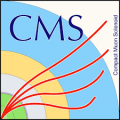 CMS is a general-purpose detector on the Large Hadron Collider (LHC) ring.
CMS is a general-purpose detector on the Large Hadron Collider (LHC) ring.
Hungarian research teams (nearly 40 people) contributed to the Nobel Prize-winning discovery of the Higgs boson. The current physics programme of the experiment focuses on, among other things, studying the Standard Model of particle physics, discovering new particles and phenomena (e.g. supersymmetric particles, dark matter and extra dimensions) and examining the quark-gluon plasma through heavy-ion collisions. Our teams play a leading role in certain fields of strong interaction research and the search for new physics.
|
Short name |
CERN LHC CMS kísérlet |
|
Name |
Compact Muon Solenoid |
|
Official website |
|
|
Year of foundation |
1992 |
|
ESFRI project/landmark |
landmark |
|
Headquarters |
Svájc, Genf |
|
Number of member countries |
47 |
|
Participating countries |
Armenia, Austria, Belarus, Belgium, Brazil, Bulgaria, China, Colombia, Croatia, Croatia, Cyprus, Czech Republic, Ecuador, Egypt, Estonia, Finland, France, Georgia, Germany, Greece, Hungary, India, Iran, Ireland, Italy, Kuwait, Latvia, Lithuania, Malaysia, Mexico, Montenegro, New Zealand, Pakistan, Poland, Portugal, Russia, Serbia, South Korea, Spain, Spain, Sri Lanka, Switzerland, Taiwan, Thailand, Turkey, Ukraine, UK, United States, Uzbekistan |
|
Hungary’s accession |
1993 |
|
Partner institutions in Hungary |
Wigner Research Centre for Physics (FK) |
|
Professional representative |
Ferenc Siklér |
|
Membership payments |
2016: CHF 97,815 (≈ HUF 28 million) 2017: CHF 94,279 (≈ HUF 27.4 million) 2018: CHF 196,392 (≈ HUF 57.9 million) 2019: CHF 199,614 (≈ HUF 65.9 million) 2020: CHF 100,177 (≈ HUF 33 million) |
Summary of professional cooperation/programme
- The CMS collaboration has produced more than 1000 new findings published in prestigious international journals.
- The CMS collaboration involves 229 researcher institutes, 2942 researchers, 1065 engineers and 281 technicians in 51 countries, closely cooperating with each other in science and technology.
-
Basic research projects:
- To investigate the even more fundamental theory behind the Standard Model of particle physics by exploring new phenomena predicted by extensions of the model (the search for supersymmetric partner particles in final states containing mainly top quarks or Higgs bosons), and by measuring known processes more accurately (final states containing two electroweak vector bosons; anomalous gauge couplings).
- A detailed study of the strong interaction through a better understanding of hadronisation, interparticle correlations and exclusive processes. Main directions: same-charge WW pairing in double parton scattering, exclusive hadron resonance generation, photon-nucleus collisions, vector meson generation with proton-disassociation, study of charge exchange, study of neutrons in proton-ion collisions, search for gluon balls in particle beams.
- Analysis of the space-time geometry of the hadron emitting source using femtoscopy. Investigating multiparticle correlations and looking for signs of coherent pion production. Investigation of possible partial restoration of chiral symmetry.
- Other topics: development of real-time event selection algorithms based on missing transverse pulse measurements; application of machine learning methods to control the data quality of luminosity detectors; high accuracy luminosity measurements.
-
Research and development projects:
The Hungarian research teams have contributed to the renewing research infrastructure with diverse research and development activities. Current trends:- Design and manufacture of controller and readout electronics for Phase-1 Pixel semiconductor based tracking detector (Wigner FK);
- Design and manufacture of front-end data collection electronics of Chromie test beam telescope for the CERN SPS test beam (Wigner FK);
- Development of FPGA based data collection system of CMS Phase-2 tracking detector (Wigner FK);
- Development of Phase-2 BRIL luminosity measurement system (Eötvös);
- Development of Zero Degree Calorimeter (ZDC) (ELTE);
- Development of muon detector positioning systems (ATOMKI);
- Testing of Phase-2 MIP Timing Detector (precision timing detector) read-out SiPM sensors (University of Debrecen)
- preparation of the high voltage system of the muon chambers for the HL-LHC (University of Debrecen)
Benefits of the membership for Hungary
- Share in the scientific results of the experiment, outstanding scientific publication performance.
- Access to high energy collision data and complex data analysis software that can only be provided by the LHC infrastructure.
- Use of the Worldwide LHC Computing Grid, a global computing infrastructure.
- Participation in detector development programmes, international scientific networks and projects.
- Opportunity for Hungarian SMEs to join high-tech projects.
- Opportunity for PhD, MSc, BSc students to gain competitive scientific and technological research and development experience in an international environment, at globally leading research institutions.






